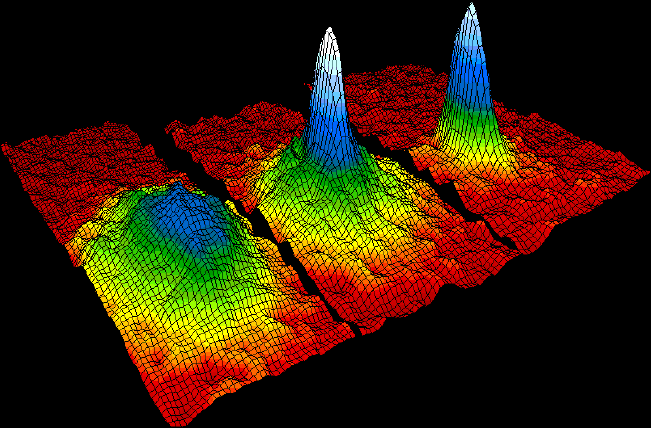Ultra-Cold Gases Offer Window Into Extra Dimensions, According to New Theory

Credit to Author: Michael Byrne| Date: Fri, 04 Aug 2017 15:00:00 +0000
A lot of the problems with string theory reduce to the fact that we don’t really have a way to verify or falsify its predictions. Key to string theory is the existence of, well, strings, which amount to tiny coiled-up bonus dimensions extending beyond the four that we all know and love. Unfortunately, these strings are so small, about 10–35 meters, that even the most powerful particle colliders imaginable wouldn’t be able to offer a glimpse.
But, still, there are many that want to believe. Enter physicists Sergio Gutiérrez, Abel Camacho, and Héctor Hernández of Universidad Autonoma Metropolitana-Iztapalapa in Mexico City. The trio posted a paper late last month to the arXiv preprint server suggesting that it may be possible to detect extra dimensions by using Bose-Einstein condensates as windows of sorts.
Bose-Einstein condensates are pretty neat. The basic idea is that if you cool a bunch of particles way, way down, they start acting like one great big particle. The upshot is that the quantum effects normally seen at subatomic scales can be experienced at relatively macro scales.
As the researchers explain in the paper, the properties of Bose-Einstein condensates depend in part on the number of space-like dimensions. If string theory were to be correct, and there are a bunch of way-small extra dimensions, we might expect discontinuities in the condensate’s specific heat, which is a measure of the heat required to raise its temperature by a set amount.
If there are some extra dimensions, then maybe we’ll see something weird happening with this specific heat as the gas is cooled beyond the condensation threshold, which is the point where all of the different particles start acting as one.
As physicist and singer Sabine Hossenfelder writes at Backreactions, there’s a pretty big flaw in this line of reasoning. The thing about these super-tiny dimensions is that any particles that might happen to be hanging out inside of them would have to be oscillating at super-high frequencies. To see this, imagine a prisoner pacing back and forth in a cell at a constant rate. Now, take the same prisoner exerting the same energy and put them into a smaller cell. They’ll be covering the span from cell wall to cell wall much more frequently. So it is with particles.
A particle confined to one of these string dimensions will have to be bouncing back and forth at way high frequencies, and that amounts to a tremendous amount of energy. This is much more energy than can be supplied in a Bose-Einstein condensate, which has been chilled to the point of profound sluggishness.
“So what’s the proposal in the paper then?,” Hossenfelder writes. “There isn’t one. They simply ignore that the higher harmonics can’t be excited and make a calculation. Then they estimate that one needs a condensate of about a thousand particles to measure a discontinuity in the specific heat, which depends on the number of extra-dimensions.”
I’ve reached out to the authors of the paper for a response and will update if and when I hear back.